
La pendola a portico, o pendola in stile Carlo X, è un orologio da tavolo molto decorativo. Veniva posizionato principalmente su console o camini negli ambienti di rappresentanza come ingressi e saloni.
Questo modello di pendola in stile impero è comparso all’inizio dell’ottocento ed era molto in voga soprattutto in Francia. Ebbe comunque una grande diffusione fino all’inizio del novecento sia in Europa che nel Nordamerica.
The portico clock, or Charles X clock, is devised to decorate console tables or mantelpieces in halls and reception rooms.
This timepiece model in Empire style appeared at the beginning of the nineteenth century. It was really in vogue especially in France. But it was widespread both in Europe and in North America until the beginning of the twentieth century.
Nel dizionario la parola “portico” è definita così
-
1.Costruzione delimitata, su uno o più lati, da una serie di pilastri o di colonne, spesso con valore decorativo e a carattere monumentale
La struttura dell’orologio ricorda proprio un antico tempio greco-romano. E’ composta da un piedistallo sul quale poggiano 4 o più colonne che sorreggono la trabeazione. L’architettura e l’arte classica degli antichi greci e romani erano infatti una grande fonte d’ispirazione per questa corrente del Neoclassicismo.
Questa pendola è stata realizzata solo in una grandezza. L’altezza variava dai 35 cm ai 50 cm circa.
In the dictionary the word “portico” is defined as
In fact the clock’s structure is reminiscent of an ancient Greek-Roman temple. It consists of a pedestal on which rest four or more columns supporting the entablature. The architecture and classical art of ancient Greece and Rome were actually a great source of inspiration for this Neoclassic wave.
This pendulum was made only in one size. The height varied from 35 cm to 50 cm.
Ogni pendola è un pezzo unico che si distingue per i dettagli. Le colonne possono essere semplici lisce, con scanalature verticali, ritorte, con intagli longitudinali in legni di essenze diverse. Lo stile si ispira principalmente a quelle classiche ioniche, doriche, corinzie, toscane e tortili.
Each pendulum is a unique piece that stands out for its details. The columns can be simple and smooth, with vertical grooves, helical, with longitudinal wood inlays of different colors. The styles mainly refer to the classic Ionic, Doric, Corinthian, Tuscan and Solomonic columns.
L’orologio è appeso alla parte inferiore dell’architrave ed occupa gran parte dello spazio tra le colonne. Il quadrante può essere smaltato bianco o in bronzo dorato ed ha quasi sempre numeri romani dipinti in nero.
The clock hangs from the bottom of the architrave and occupies most of the space between the columns. The clock face can be white enamel or gilt brass and it usually has black painted Roman numerals.
Le lancette sono nere, sottili ed affusolate con un cerchio vuoto alle estremità, dette “à pomme”. Questo modello, denominato anche “lancette Breguet“, fu inventato nel 1783 dall’orologiaio Abraham Louis Breguet. Sono caratterizzate dalla forma semplice, che rende facile la lettura del quadrante, e sono realizzate in acciaio brunito. Furono usate dei principali orologiai e largamente imitate da altri.
The hands are black, thin and tapered with an empty circle at the ends, called “à pomme”. This model, also known as “Breguet Hands”, was invented in 1783 by the watchmaker Abraham Louis Breguet. They are characterized by the simple shape, which makes the dial easy to read, and are made of burnished steel. These hands were used by the principal watchmakers and are widely imitated by others.
Il meccanismo si trova dietro al quadrante e si attiva caricando la molla interna con una chiave. Il movimento dura 8 giorni dal momento della carica, ma in certi modelli può arrivare fino a 21 giorni prima di fermarsi.
The clockwork mechanism is located behind the dial and it’s activated by winding the internal spring with a key. Usually it has an 8 days movement, but in some rare cases it can last up to 21 days.
Il pendolo è agganciato al retro dell’orologio. In quasi tutti i modelli è di bronzo o ottone dorato. Ha una forma piuttosto tozza ed è caratterizzato da una grande lente. Spesso è riccamente decorata, come nel caso qui sopra dove si vede a rilievo una corona di fiori con al centro un cigno.
La lente è tenuta ferma da una vite. Per regolare l’orologio, nel caso tenda ad anticipare o a ritardare, bisogna svitarla e far scendere o salire la lente, modificando la lunghezza del pendolo. Un pendolo lungo oscilla più lentamente di uno corto.
Il moto del pendolo è influenzata da diversi fattori, come la gravità e la temperatura. A diverse latitudini esso oscilla in modo diverso: più lentamente vicino all’equatore o più accelerato vicino ai poli.
The pendulum hangs from the back of the clock. In almost all models it’s made of gilt bronze or gild brass. It’s is quite short and is characterized by a large bob, which is often richly decorated, as the example above, where a floral wreath with a swan in the middle ornate the piece.
The bob is held by a screw. If the clock tends to run too fast or too slow, you can adjust the period, by unscrewing it and sliding the bob up or down on the rod in order to modify the length of the pendulum. A short pendulum oscillates slower than a short one.
The motion of the pendulum is influenced by several factors, such as gravity and temperature. In fact at different latitudes it oscillates differently: more slowly near the equator, while more accelerated near the poles.
Con i cambi di temperatura il metallo si deforma, allungandosi con il caldo e ritraendosi con il freddo. Di conseguenza la lunghezza del pendolo si modifica accelerandone o ritardandone la marcia. Le pendole antiche in estate perdono fino ad un minuto alla settimana. Per questo motivo alcuni orologi a pendolo possono avere una asta in vetro o in legno, due materiali più resistenti ai cambiamenti climatici.
La maggior parte delle pendole a portico hanno invece un pendolo compensato. L’asta è composta da 9 bacchette di due metalli con coefficienti di dilatazione termica differenti. 5 sono d’acciaio, che si dilata poco e 4 sono d’ottone, che si dilata molto. Sono di due lunghezze diverse e sono fissate alternate in parallelo ad una griglia così che dilatandosi in modo diverso, si compensino tra loro, mantenendo la lente alla stessa altezza e le oscillazioni costanti, malgrado i cambi di temperatura.
Questo tipo di pendolo fu inventato nel 1726 dal falegname ed orologiaio inglese John Harrison e permise di ridurre l’imprecisione dell’orologio a pochi secondi alla settimana. Il pendolo compensato era sinonimo di precisione, tanto che poi furono prodotti pendoli falsi che ne imitavano l’estetica, ma non avevano nessuna capacità di compensare la temperatura.
The change of temperature deforms metals, expanding in the heat and contracting in the cold. Consequently the length of the pendulum is modified, accelerating or delaying its movement. In Summer, ancient clocks may lose up to one minute per week. For this reason some grandfather clocks have a rod made of glass or wood, these being more climate-resilient materials.
Most portico clocks have a gridiron pendulum. The rod is made of 9 parallel rods of two metals with different thermal expansion coefficients. 5 are made of iron and 4 are made of brass and have two different lengths. They are fixed in a grid, so that when they expand differently, they compensate each other keeping the bob at the same height and the oscillations constant, despite temperature changes.
This type of pendulum was invented in 1726 by the British carpenter and watchmaker John Harrison and it reduces the clock’s inaccuracy to a few seconds per week. Gridiron pendulums were synonymous with precision. So many false pendulums were produced. They look like the original, but have no temperature compensating qualities.
Il materiale più usato per la realizzazione di questo modello di orologi è il legno pregiato, come la radica di mogano (con le sue macchie o venature irregolari) o l’ebano (il cui colore si avvicina al nero) o il palissandro (detto anche legno di rosa, dalle tonalità marrone rossiccio chiaro con striature nerastre).
La parte frontale del piedistallo e della trabeazione possono essere decorati con intarsi di legni diversi, come in questa pendola francese in noce della metà del’800, o con altri materiali come avorio o madreperla. I soggetti preferiti sono i motivi classici dello stile Impero come ghirlande, foglie d’acanto, corone d’alloro o scene mitologiche.
Most of the portico clocks are made of precious woods, such as mahogany root (with its irregular spots or veining) or ebony (whose color is almost black), or rosewood (with its light reddish brown hues and blackish streaks).
The front part of the pedestal and the entablature can be decorated with inlays of veneers, primarily woods, like this French walnut pendulum dating mid-nineteenth century. But it may include other materials like ivory or mother-of-perl. Favorite subjects were the classical Empire style motifs such as wreaths, acanthus leaves, laurel wreaths or mythological scenes.
La struttura delle pendole a portico poteva essere anche di altri materiali come marmo, cristallo o alabastro. Questa in particolare è in alabastro con capitelli corinzi, piedini a zampa di leone, i fregi a palmette, le ghirlande di frutta, tutti realizzati in bronzo dorato.
The structure of the portico clock could be also made of other materials such as marble, crystal or alabaster. This in particular is made of alabaster and has Corinthian capitals, lion-claw feet, palmette friezes, fruit wreaths, all made of gilded bronze.
La pendola qui sopra è stata realizzata a Parigi nel 1850. E’ di marmo bianco variegato grigio con capitelli, pendolo, piedini e ghiera in bronzo dorato. Il prezzo raggiunto in asta è stato di 2.214 $.
The pendulum above was made in Paris in 1850. It’s in gray variegated marble, with capitals, pendulum bob, feet and bezel in gilded bronze. The price reached in auctions was 2,214 $.
Questa pendola, datata 1820, ha le colonne in cristallo tagliato a punta di diamante, mentre il piedistallo, la trabeazione, i capitelli corinzi, il quadrante, il pendolo, le ghirlande ed i cesti floreali, che decorano la parte anteriore, sono tutti in bronzo dorato.
This pendulum, dated 1820, has crystal columns with a diamond point cut, while the pedestal, the entablature, the Corinthian capitals, the dial, the pendulum, the garlands and the floral baskets, that decorate the front, are all in gilded bronze.
Esistono anche versioni di pendole la cui struttura è realizzata interamente in bronzo dorato, come la pendola nella fotografia. Gli elementi decorativi sono a rilievo.
There are other versions of portico clocks whose structure is entirely made of gilded bronze, also called ormolu, like the model in the picture. The decorative elements are in relief.
Il bronzo o l’ottone dorato erano ampiamente usati durante il periodo Barocco e Rococò, raggiungendo l’apice all’inizio del diciannovesimo secolo. Si realizzavano fregi, ornamenti di mobili e porcellane, maniglie, candelabri, lampadari, etc.. La ragione del grande successo era l’effetto prezioso, il basso costo rispetto all’oro, il punto basso di fusione, la duttilità e malleabilità di questi metalli e quindi la facilità di lavorazione.
Gli artigiani realizzavano l’oggetto in bronzo (una lega di rame arricchita di stagno) o in ottone (una lega di rame e zinco). Poi si passava alla doratura a fuoco. Si applicava un’amalgama di oro e mercurio solo sulle parti dell’oggetto, che sarebbero state visibili. Poi si metteva il pezzo in un forno e si faceva evaporare il mercurio. Questo passaggio veniva ripetuto, per ottenere tonalità d’oro diverse, partendo da un minimo di tre strati. Il risultato era un oggetto con una superficie d’oro molto resistente.
Gilded ronze or gilded brass were widely favored during the Baroque and Rococo periods, reaching its peak at the beginning of the nineteenth century. They were used for making friezes, furniture ornaments, embellishments for porcelain, handles, chandeliers, etc.. The reason for the big success was the precious effect, the low cost compared to gold, the low melting point and the ease of manufacturing as these metals are ductile and malleabile.
The artisans made the object of bronze (a copper alloy enriched with tin) or of brass (an alloy of copper and zinc). Then it was gold-plated by means of fire-gilding. They applied an amalgam of gold and mercury only on the parts of the object, that would have been visible. Then they put the piece in an oven and let the mercury evaporate. These steps were repeated, to obtain different shades of gold, starting from a minimum of three coats. The result was an object with a very resistant golden surface.
Durante il processo di doratura si sprigionavano fumi tossici. Gli artigiani morivano giovani a causa dell’intossicazione da mercurio. Si cercò di prendere precauzioni, come l’uso della maschera sopra riprodotta o il masticare del pane.
Intorno al 1830 la Francia proibì questa lavorazione. In seguito fu sostituita dalla doratura galvanica. A quasi 200 anni di distanza, ovvero nel 2020, diventerà effettiva la Convenzione di Minamata firmata da 128 nazioni, che prevede il bando totale, in tutto il mondo, dell’uso industriale del mercurio e la chiusura delle miniere di mercurio.
During this fire-gilding process toxic fumes were released. The artisans died young because of mercury intoxication. They tried to take precautions, such as the use of the mask reproduced above or chewing bread.
Around 1830 France prohibited this process. Later it was replaced by galvanic gilding. Almost 200 years later, in 2020, the Minamata Convention, signed by 128 countries will become effective. It provides the complete ban of the industrial use of mercury and the mercury mines closure worldwide.
Tornando alle nostra pendola a portico, una caratterista che accomuna quasi tutte le versioni è l’uso dei fregi d’ottone dorato per realizzare i capitelli, le basi delle colonne, il pendolo ed il quadrante o la ghiera.
Going back to our portico clock , a characteristic that almost all versions have in common is the use of gilt brass friezes to make capitals, the columns’ bases, the pendulum, the bob, the dial or the bezel.
A volte i fregi dorati decorano anche il piedistallo e la trabeazione con bordini, rosette, ghirlande, festoni o scene mitologiche.
Qui una pendola francese stile impero in ebano dei primi dell’800 con importanti fregi e piedini dorati con foglie d’acanto.
Here a French Empire portico clock dated early 19th century. It’s made of ebony with important friezes with gilded feet with acanthus leaves.
Sometimes the golden friezes also decorate the pedestal and the entablature with borders, rosettes, wreaths, festoons or mythological scenes.
Sopra un’altra pendola francese in stile Impero in ebano con quadrante argentato e fregi in ottone che rappresentano una scena dell’antichità classica.
Above another French Empire-style ebony portico clock with a silvered dial and brass friezes representing a scene from classical antiquity.

Partendo dalle misure dalla pendola a portico che ho in casa, ho ricavato le dimensioni in scala 1:12. Ovvero, ho misurato ogni elemento delle pendola e poi ho diviso ogni numero per 12.
Per la struttura ho usato del cartoncino spesso 1mm. Come sempre, ho scelto quello riciclato delle scatole dei cereali. Per sapere quali cartoncini siano indicati e quali è meglio scartare, potete leggere qui.
Starting from the measures of a portico clock I have at home, I obtained the dimensions in 1:12 scale. That means, I measured every element of the pendulum clock and then I divided each number by 12.
For the structure I used a 1mm thick cardboard. As usual, I chose the recycled cardboard of cereal boxes. To find out which cardboards are the best to use and which are to discard, you can read here.

Il piedistallo è composto da tre pezzi. Per realizzare quello inferiore, ovvero il più grande, ho tagliato 6 pezzi di cartoncino spesso 1mm nelle misure indicate nella foto, che sono in cm.
The pedestal is made of three parts. To make the lower one, which is also the biggest, I cut 6 pieces of cardboard 1mm thick in the measures shown in the picture. They are in cm.

Con la colla vinilica ho incollato i 4 lati a filo sul pezzo di base. Poi l’ho chiuso con l’ultimo rettangolo.
I glued with the vinyl glue the 4 sides flush on the base piece. Then I closed it with the last rectangle.

Le facciate del corpo che avevo ottenuto presentavano delle leggere imperfezioni.
The faces of my base had slight imperfections.

Per questo ho passato sulla carta vetrata tutte le facce che presentavano giunture non perfettamente allineate e le ho pianeggiate.
For this reason I gently rubbed on sandpaper all sides that hadn’t perfectly aligned joints and I leveled them.
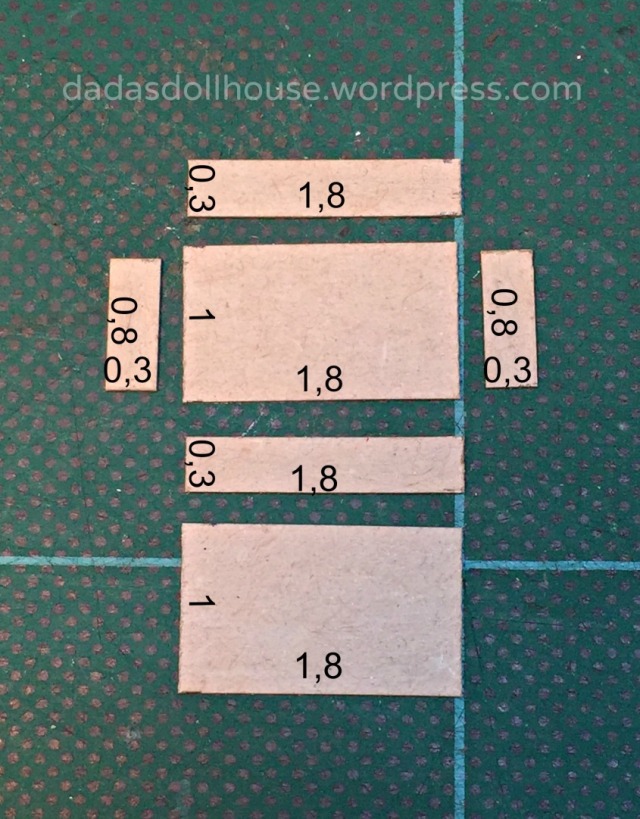
Per la parte superiore del piedistallo ho realizzato un secondo elemento, leggermente più piccolo. Nella foto ho indicato le misure di questo secondo pezzo, sempre in cm. Esso va assemblato come il precedente.
For the top of the pedestal I made a second element, slightly smaller. In the picture I indicated the measures of this second piece in cm. It must be assembled like the previous one.

Il raccordo tra i due pezzi appena realizzati è un rettangolo molto svasato. Per realizzarlo ho incollato, uno sopra l’altro, tre rettangoli di cartoncino, grandi come la base più grande (2cm x 1,2cm).
Poi ho disegnato, centrandolo, un rettangolo grande come il secondo elemento, quello più piccolo (1,8cm x 1cm). Con la carta vetrata ho sagomato tutti i bordi, creando una superficie degradante partendo dalla riga interna verso l’esterno.
The connection between the two pieces just made is a very flared rectangle. To make it, I glued three rectangles of cardboard one on topo of the other. They are as large as the larger base piece (2cm x 1,2cm).
Then I traced on it, centering it, a rectangle, as big as the smaller base piece (1.8cm x 1cm). With the sandpaper I shaped all the edges, creating a degrading surface starting from the inner line to the outside.

Infine ho incollato i tre pezzi, uno sopra all’altro, come nella foro.
Finally I glued the three pieces, one above the other, as in the picture.

Anche la trabeazione, la parte alta dell’orologio, è formata da tre elementi. Il pezzo inferiore ha le misure indicate in questa foto.
Also the entablature, the top of the pendulum clock, is made of three elements. The lower piece has the measures shown in this photo.

Il pezzo superiore ha la stessa dimensione, ma è più sottile. Per questo è sufficiente incollare, uno sopra all’altro, 3 rettangoli da 0,7cm x 1,5cm cad.
The upper piece has the same size, but is thinner. Therefor I simply glued 3 rectangles together. Each measures 0.7cm x 1.5cm.

Anche questo elemento di mezzo è svasato ma è realizzato con 4 cartoncini da 1,9cm x 1,1cm. Prima ho incollato 3 insieme. Su una facciata ho segnato le dimensioni del pezzo sul quale va applicato (0,7cm x 1,5cm) ed ho creato un bordo svasato, scartavetrando dalla riga appena tracciata verso il bordo.
Poi ho applicato sul lato più grande il quarto cartoncino, creando così un bordo finale diritto.
Also this middle element has a sloped edge, but it’s made of 4 pieces of cardboard measuring 1.9cm x 1.1cm each. First I glued 3 pieces together. On one side I traced the dimensions of the element on which I will apply it (0.7cm x 1.5cm) and I sanded the edges from the drawn line to the border.
Then I applied the fourth cardboard piece on the bigger side, creating a final straight edge.

Infine ho incollato uno sopra all’altro questi tre elementi, avendo cura però di posizionare l’elemento svasato con la base più alta in alto, come nella foto.
Finally I glued these three elements one on top of the other, leaving the sloped element with the larger side at the top, like in the picture.

Ora è il turno delle colonne. Ho tagliato degli stuzzicadenti, ricavando 4 pezzi lunghi 1,8cm cadauno.
Per i capitelli, ho tagliato con la perforatrice 16 dischi di carta con un diametro di 5mm e li ho incollati accoppiandone due insieme.
Now it’s the turn of the columns. I cut some toothpicks, making 4 pieces 1.8cm long each.
For the capitals, I cut with the puncher 16 disks of paper with a diameter of 5mm and I glued them two by two.
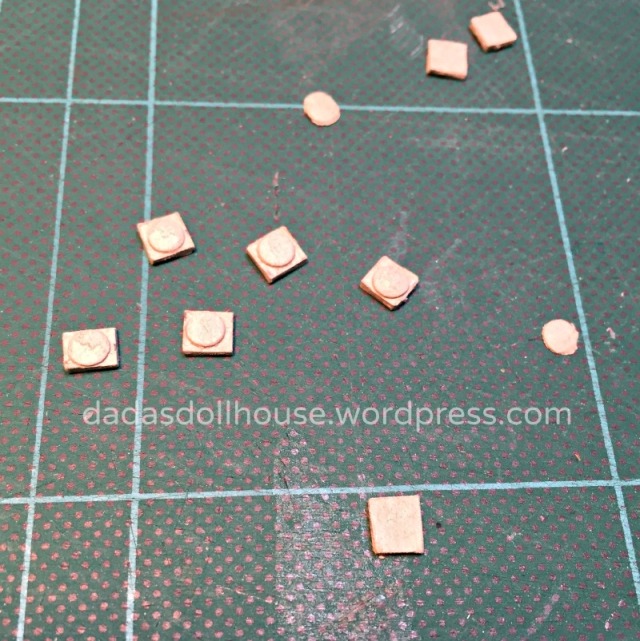
Ho poi tagliato 16 quadrati di cartoncino. Ogni lato è lungo 6mm. Li ho incollati a due a due. Su un lato ho incollato al centro il disco di carta.
Then I cut 16 squares of cardboard. Each side is 6mm long. I glued them two by two. On one side, in the middle, I applied the paper disc.

Con il colore acrilico color oro ho colorato tutte le parti visibili dei capitelli.
I painted all the visible parts of the capitals with gold acrylic color.

Con gli acquerelli color marrone chiaro ho dipinto tutte le parti che devono sembrare di legno, ovvero le colonne, il piedistallo e la trabeazione.
Ho distribuito il colore in modo non omogeneo, per imitare le venature del legno. Per dipingere con gli acquerelli sul cartoncino, il colore deve essere poco acquos, altrimenti i pezzi si potrebbero scollare o il cartoncino imbarcarsi.
I painted light brown all the parts that should look like wood: the columns, the pedestal and the entablature.
I used watercolors and applied it unevenly, to imitate wood grain. Watercolors shouldn’t be too watery when they are used on cardboard. Otherwise the pieces could unstick or the cardboard embark.
“Non si butta mai nulla” – questa è una regola che osservo diligentemente e che vale per tutti i tipi di materiale. Questo vassoio per pasticcini può sempre tornare utile. Si può usare il cartone, lasciando la parte dorata all’esterno, per realizzare oggetti d’oro, come ad esempio un portagioie o addirittura una pendola a portico in ottone. Oppure si può recuperare la carta dorata che ne riveste un lato. Per staccarla è sufficiente lasciare il vassoio in acqua. Il foglio così si separa dal cartone sottostante. Un volta asciutto può essere usato in diversi progetti.
“Never throw anything away” is a rule I diligently observe and I apply to all sort of material. When you buy pastries in Italy, you get this patisserie tray. Sooner or later it will come in handy. The cardboard can be used for making gilded objects, like a jewel case or even an ormolu portico clock. The golden paper, that covers one side, can be detached and used separately. Simply leave the tray in water. Shortly afterwards the sheet will come off. Once dry it can be used in different projects.
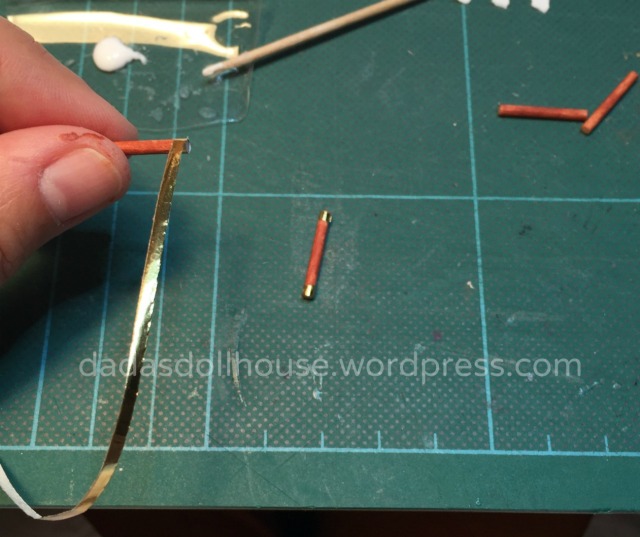
Qui l’ho usato per rifinire le colonne. Ho tagliato una strisciolina alta 2mm. L’ho avvolta attorno ad un’estremità della colonna, facendo un giro semplice e lasciando solo una piccola sovrapposizione. Troppi strati creerebbero, infatti, un grosso spessore antiestetico.
Here I used it to finish the columns. I cut a 2mm high strip. I wrapped it around one column’s end, making a simple turn and leaving only a small overlap. In fact, too many layers would create an horrible thickness.
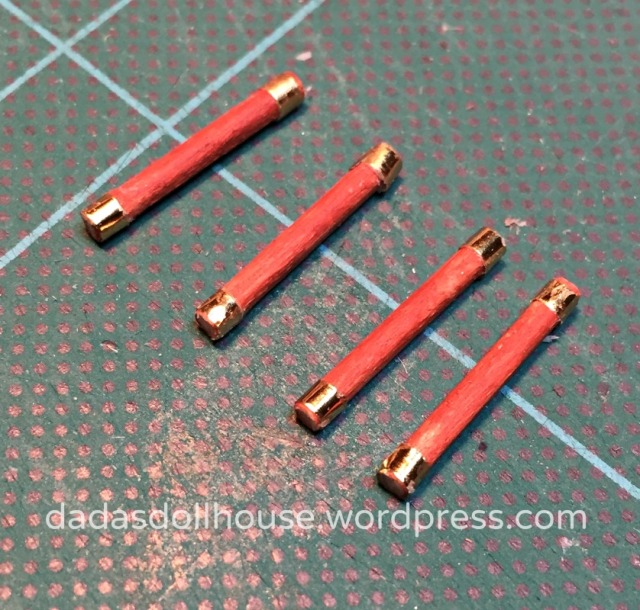
Ho applicato la strisciolina dorata a tutte le estremità delle colonne.
I applied the gilded strip to all columns’s ends.

Sul piedistallo ho incollato le basi delle colonne a filo dei 4 angoli.
I glued the bases of the columns on the pedestal, flush with the 4 corners.

Al centro di ogni base ho fissato con la colla vinilica le 4 colonne.
At the center of each base I attached the 4 columns with vinyl glue.

Procedendo con la costruzione, mi sono accorta che avevo dimenticato i piedini sotto il piedistallo. Sebbene certe versioni non li abbiano, ho deciso di rimanere fedele alla mia pendola a portico vera.
Ho creato 4 rettangoli (2mm x 6mm) di cartoncino doppio. In seguito li ho colorati delle stesso colore della base.
Going forward with the construction, I realized that I had forgotten the feet under the pedestal. Although certain versions don’t have them, I sticked to my real portico clock.
I created 4 rectangles (2mm x 6mm) of double cardboard. Then I colored them in the same color as the base.

Gli intarsi sul piedistallo e sulla trabeazione sono dei ritagli di giornale. Come vi avevo già raccontato nel post dedicato alle orchidee in vaso, molte decorazioni per le miei miniature provengono dalle riviste, con grande disappunto di mio marito che a volte non riesce a terminare di leggere gli articoli, mancando diverse pagine.
The marquetries on the pedestal and on the entablature are newspaper clippings. As I had already mentioned in the post dedicated to the potted orchids, many decorations for my miniatures are cut outs of magazines, with great disappointment of my husband. who sometimes can’t finish reading the articles, as several pages are missing.
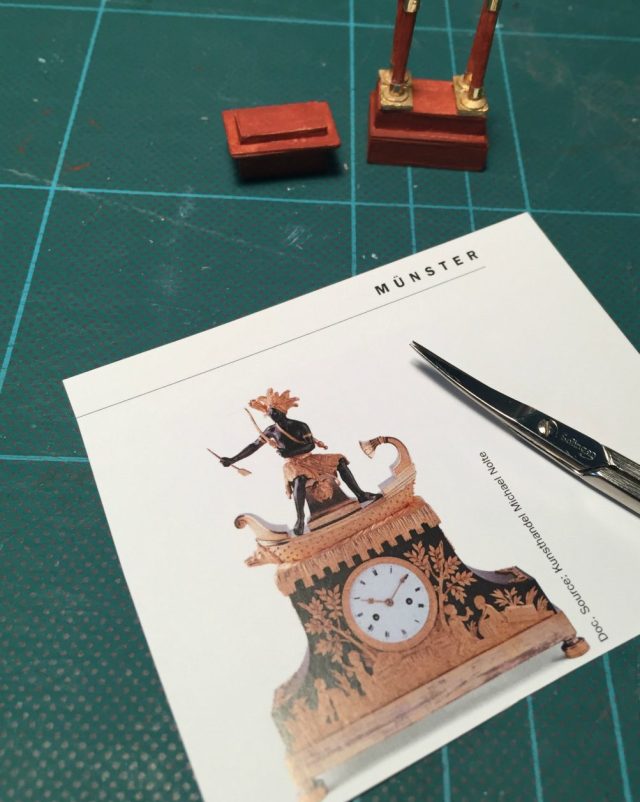
Anche il quadrante dell’orologio fa parte del mio “bottino”. L’avevo trovato su un catalogo, penso di una casa d’aste. Avendo la misura perfetta per il mio orologio in miniatura, l’ho ritagliato ed usato.
Even the watch face is part of my “booty”. I found it on a catalog of an auction house, I think. Having the perfect size for my mini clock, I cut it out and used.
In internet ci sono parecchie immagini di quadranti. Ve ne sono di diverse misure e spesso si possono ridimensionare per ottenere quella adatta al nostro progetto. Ho trovato questi su Flikr. Anche sul sito di Christel Jensen ci sono dei bei quadranti, come su The mermaids tale, solo per citarne alcuni.
There are several images of clock faces on the Internet. They come in different sizes and they can often be resized to get the one suitable for our project. I found these on Flikr. Also on the site of Christel Jensen there are some beautiful quadrants, as on The mermaids tale, just to name a few.

Ho ritagliato un disco dal cartoncino dorato, ricavato dal vassoio della pasticceria, grande come il quadrante dell’orologio e li ho incollati insieme, lasciando la parte dorata visibile sul retro.
I cut out a disk from the golden cardboard of my pastry tray. It has the exact size of the clock face. I glued them together, leaving the gilt surface visibile on the back.
 Con un pennarellino color oro ho ripassato tutto il contorno del quadrante, rendendolo più brillante. Infine ho passato un paio di mani di vernice trasparente super lucida, che ha creato l’effetto vetrificato.
Con un pennarellino color oro ho ripassato tutto il contorno del quadrante, rendendolo più brillante. Infine ho passato un paio di mani di vernice trasparente super lucida, che ha creato l’effetto vetrificato.
With a golden metallic marker, I painted the whole contour of the dial, making it brighter. Finally I passed a couple of hands of super-clear transparent varnish, creating a vitrified effect.

Ho incollato i capitelli sulla parte alta delle 4 colonne. Questo passaggio è necessario, per poter determinare la lunghezza del pendolo.
Per calcolarla, ho appoggiato la trabeazione provvisoriamente sulle colonne ed ho misurato la distanza tra piedistallo e architrave. Nella mia pendola è di 2,2 cm. Ho tenuto poi conto che la lente non deve toccare la base e che in alto serve qualche millimetro in più per fissare parte del pendolo dentro l’architrave.
I glued the capitals on top of the 4 columns. This is necessary in order to determine the length of the pendulum.
To calculate it, I temporarily placed the trabeation on the columns and measured the distance between pedestal and architrave. In my pendulum clock it measures 2.2 cm. Then I kept in mind that the lens shouldn’t touch the base and that at the top I will need a few millimeters more to fix part of the pendulum’s rod in the architrave.

Essendo lo spazio sotto l’architrave molto ridotto, non ho realizzato un pendolo compensato, perché sarebbe stato comunque nascosto dalla lente. Al suo posto ho usato un cordoncino da regalo d’ora piuttosto rigido. Ad un’estremità ho incollato la lente che ho realizzato appiattendo un copriperla. Sul retro, ho applicato abbondante colla vinilica, riempiendolo.
Poco sopra la lente ho incollato il disco d’oro con il quadrante, lasciando il cordoncino sul retro. Poil’ho nascosto con una grossa goccia di colla vinilica.
Since the space under the architrave is very small, I didn’t make a gridiron pendulum. In any case it would be hidden by the bob. In its place I used a rather stiff golden gift cord. At one end I glued the bob, made with a flattened bead cup. On the rear side of the bob I applied abundant vinyl glue, filling it up.
Just above the bob I glued the golden disk with the dial, leaving the cord on the back. Then I hid it with a big vinyl glue drop.

Come si può vedere, lo spazio tra lente e quadrante è veramente poco.
As you can see, lens and dial are very close.

Con un mini trapano ho praticato un foro al centro del fondo della trabeazione. Servirà per appendere il quadrante con il pendolo.
Poi ho applicato la vernice trasparente lucida su tutte le parti in “legno” della struttura.
With a mini drill I pierced a hole in the middle of the entablature’s bottom. I will use it to hang the dial with the pendulum.
Then I applied a transparent glossy varnish on all parts of the “wooden” structure.

Per appendere il quadrante ed il pendolo, ho sporcato l’estremità del cordoncino di colla e con l’aiuto di un ago l’ho infilato nel foro nell’architrave. Ho riposizionando la trabeazione sui capitelli ed ho regolato definitivamente la lunghezza del cordoncino. Una volta soddisfatta, ho applicato un leggero giro di colla attorno all’imboccatura del foro per fissare definitivamente il tutto.
To hang the dial and the pendulum, I put some glue on the end of the cord and with the help of a needle I inserted it into the hole in the architrave. I positioned the entablature again on the capitals and I definitively adjusted the length of the cord. Once satisfied, I applied some glue around the mouth of the hole to fix the pendulum permanently.

Usando l’acrilico color oro ho dipinto la colla sul retro del quadrante e della lente.
I painted the glue on the back of the dial and the bob with golden acrylic color.

A questo punto ho incollato la trabeazione sui capitelli. L’architrave risulta più corto e non copre completamente i capitelli, proprio come nel modello vero.
At this point I just glue the trabeation on the capitals. The architrave is shorter and doesn’t completely cover the capitals, just like in the real model.


La pendola a portico è pronta e mi sembra di esser stata abbastanza fedele al modello originale.
Now the portico clock is ready and I think I sticked fairly to the original model.
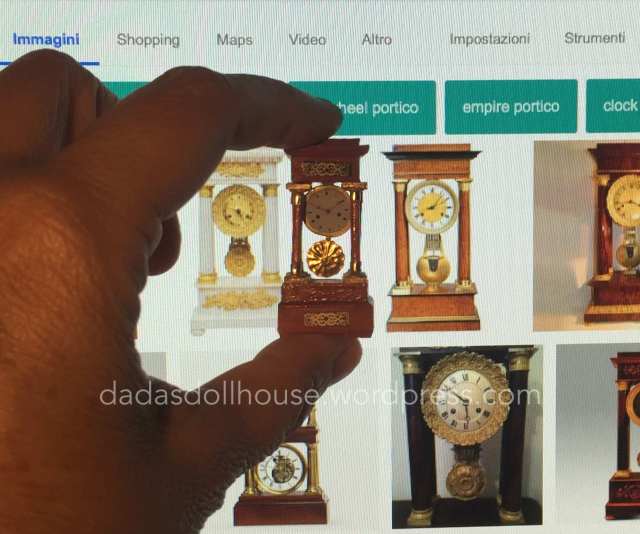
Ho voluto fare un ultimo controllo avvicinando la mia pendola in miniatura all’immagini sullo schermo del mio computer, che avevo trovato con google, e con grande soddisfazione ho visto che la mia versione mini è molto simile a quelle vere!
I did one last check. I placed my miniatures portico clock in front of the screen, where the images found with google were displayed and with great satisfaction I saw that my mini version was it’s very similar to the real ones!
In internet non ho trovato altri tutorial per realizzare questo modello di orologio in miniatura, fatta eccezione per la pendola di Urszula. Sul suo sito, Miniaturowe Domki, trovate le spiegazioni.
I haven’t found other tutorials in the internet, explaining how to make this model in miniature. The only exception is Urszula’s pendulum clock. On hier website, Miniaturowe Domki, you can find the diy.
Sul sito Sala Ludica ho trovato una versione da stampare molto carina della pendola a portico. Sono molto interessanti anche gli altri orologi sulla stessa pagina ed i fogli con immagini vintage con temi vari.
On the website Sala Ludica I found a very nice printable version of the portico clock. There are other interesting clocks on the same page and also the other sheets with vintage images are worth a visit.
Al giorno d’oggi le pendole a portico in miniatura sono piuttosto rare e non è facile trovare esemplari in vendita. Qualche tempo fa ne ho vista una su Ebay. Era stata realizzata da David Iriarte in finto marmo verde in scala 1:12.
Today portico clocks in miniature are quite rare and it isn’t easy to find them for sale. Some time ago I saw this on Ebay. It’s made by David Iriarte in fake green marble in 1:12 scale.
Nell’ottocento, invece, la pendola a portico era molto diffusa tanto che veniva realizzata anche per la casa delle bambole. Qui sopra un modello tedesco in bronzo dorato, realizzato da Erhard & Söhne e venduto all’asta nel 2011 per 93,5 $. Un’altro orologio simile, datato 1890, è stato venduto a 185 $.
Questa ditta, fondata nel 1843 nel Baden-Württemberg, era specializzata nella produzione di oggetti di metallo dorato ed incisioni, come medaglie, fibbie, mobili per le case delle bambole, serrature, bottoni, bigiotteria, lampade per altari ed ostensori.
In the nineteenth century, however, portico clocks were very common and they were even made for dollshouses. Above a German piece in gilt bronze, made by Erhard & Söhne and auctioned in 2011 for 93.5 $. Another similar watch, dated 1890, was sold for $ 185.
This company was founded in 1843 in Baden-Württemberg. It was specialized in the production of gilded metal objects and engravings, such as medals, buckles, dollhouse furniture, locks, buttons, jewelry, altar lamps and monstrances.
Concludo la carrellata di pendole a portico in miniatura con l’orologio da camino Biedermeier al centro della foto. E’ stata realizzata nel 1870. Particolari sono le colonne scolpite in osso. E’ stata venduta per 500$.
Mi sono molto divertita a scovare tutte le informazioni su questo tipo d’orologio così particolare e spero che le abbiate trovate anche voi interessanti. Se costruirete la mia pendola a portico, mi farebbe molto piacere ricevere la foto e citarvi nel blog.
I end the miniature portico clocks roundup with the Biedermeier mantel clock in the center of the picture. It was built in 1870. The columns carved in bone are peculiar. It was sold for $ 500.
I had a lot of fun finding all the information on this special type of watch and I hope you found them interesting too. If you will build my portico clock, I would be very pleased to receive the photo and quote you in the blog.





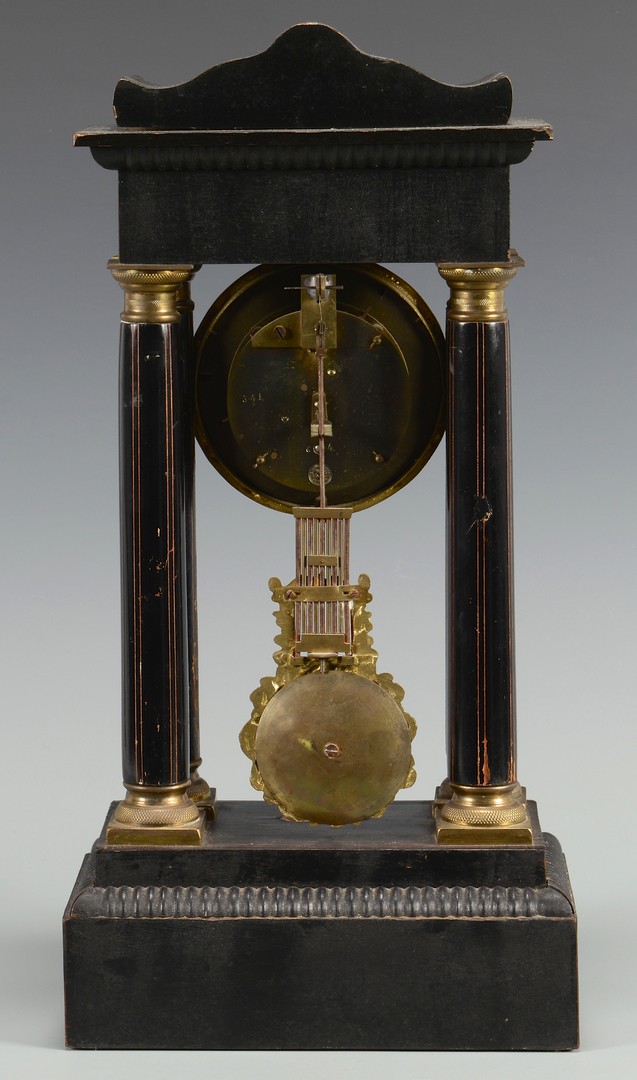













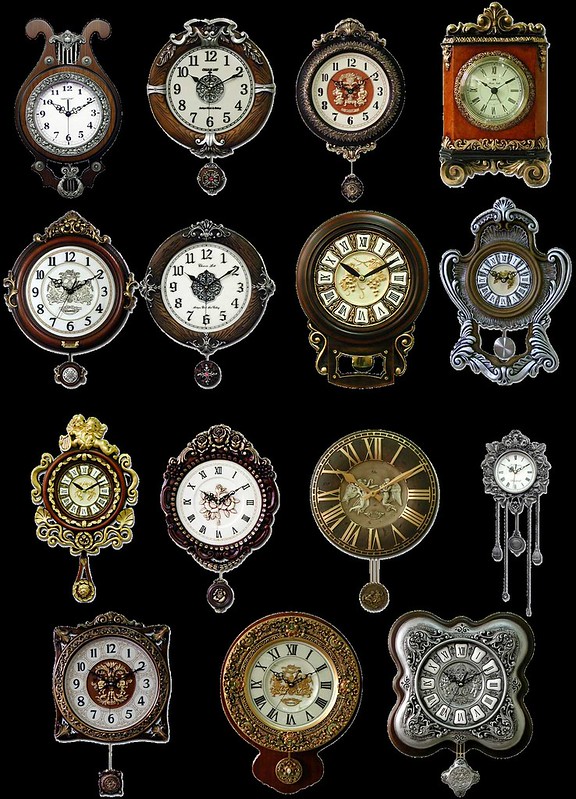


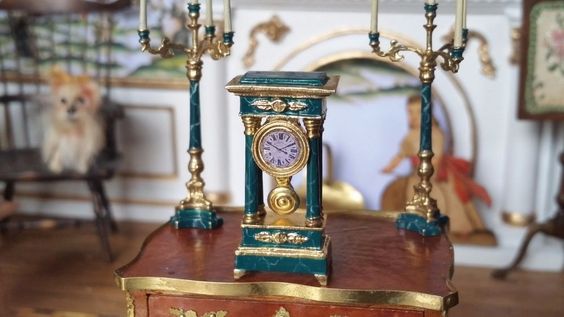












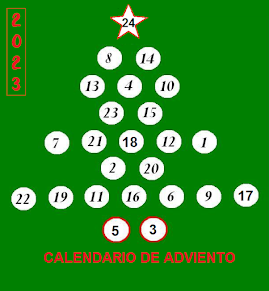










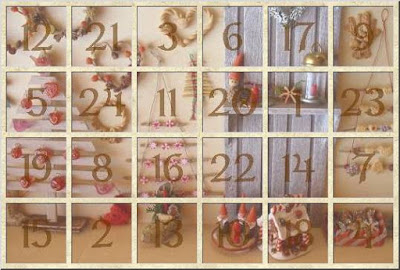
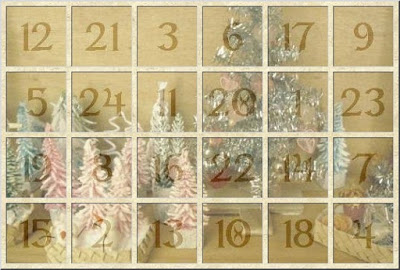












Bentornata 😀
Che articolo meraviglioso: interessante e istruttivo!
Il tuo orologio è favoloso, che lavoro 😮😍
Bacio
Sid
"Mi piace"Piace a 1 persona
Grazie Sid! … forse dalla lunghezza del post si capisce quanto ami questo tipo d’orologio 😂
"Mi piace"Piace a 2 people
Yes 😄
"Mi piace"Piace a 1 persona
BRAVO!!!
your mini Portico clock is Beautifully done Esilia, and the background history PLUS your Step-by-step tutorial are both informative and inspirational! I constructed a Portico clock back in the 90’s which I still have and have always meant to do another. Now that I’ve read your excellent instructions and seen the many variations in styles, I’m very tempted to try making one again-
so Thank You! 😀
"Mi piace"Piace a 1 persona
Thank you Elizabeth! I would love to see your portico clocks, the old and the new ones! I’m fascinated by this model 😉 both in miniature and real size…
I wish you a nice summer ❤️
"Mi piace""Mi piace"
Wonderful! Very well done! It’s beautiful! Congratulations from USA.
"Mi piace""Mi piace"
Thank you Lisa, I’m happy you like it! ❤️
"Mi piace""Mi piace"
Molto bello il tuo orologio.
Grazie per il tutorial.
"Mi piace"Piace a 1 persona
Grazie a te Fabiola 🙂
"Mi piace""Mi piace"
Bravissima! Che pazienza per lavorare su dettagli così minuscoli… Sempre interessante l’escursus storico, mi ha colpito in particolare la storia delle stecche di diversi materiali e le imitazioni che non funzionavano… XD Ottimo lavoro, è sempre un piacere trovare queste idee nuove sul tuo blog!
"Mi piace"Piace a 1 persona
Grazie Elena per il tuo gentile commento. Mi fa molto piacere sentire che tu abbia trovato interessanti le miei divagazioni sul tema 😊
"Mi piace""Mi piace"
Grazie Elena per il tuo gentile commento. Mi fa molto piacere sentire che i miei lettori trovino interessanti le miei divagazioni sul tema 😊
"Mi piace""Mi piace"
Fantastic amount of research and interesting information Ersilia. I once read a history of the invention of the clock. Interesting that we have gone through so many difficulties to be able to keep time. Thank you for the tutorial, you inspire me to make one too.
"Mi piace"Piace a 1 persona
Thank you Megan! I would love to see your version if the portico clock ❤️
"Mi piace""Mi piace"